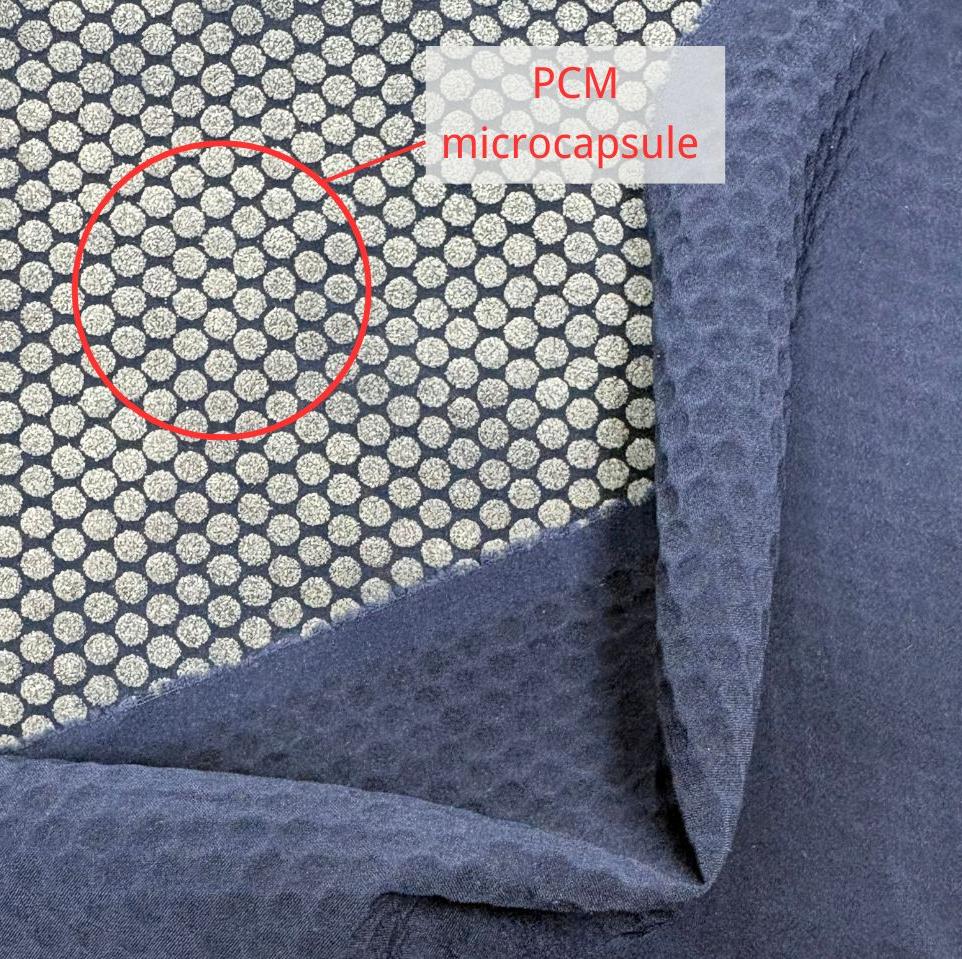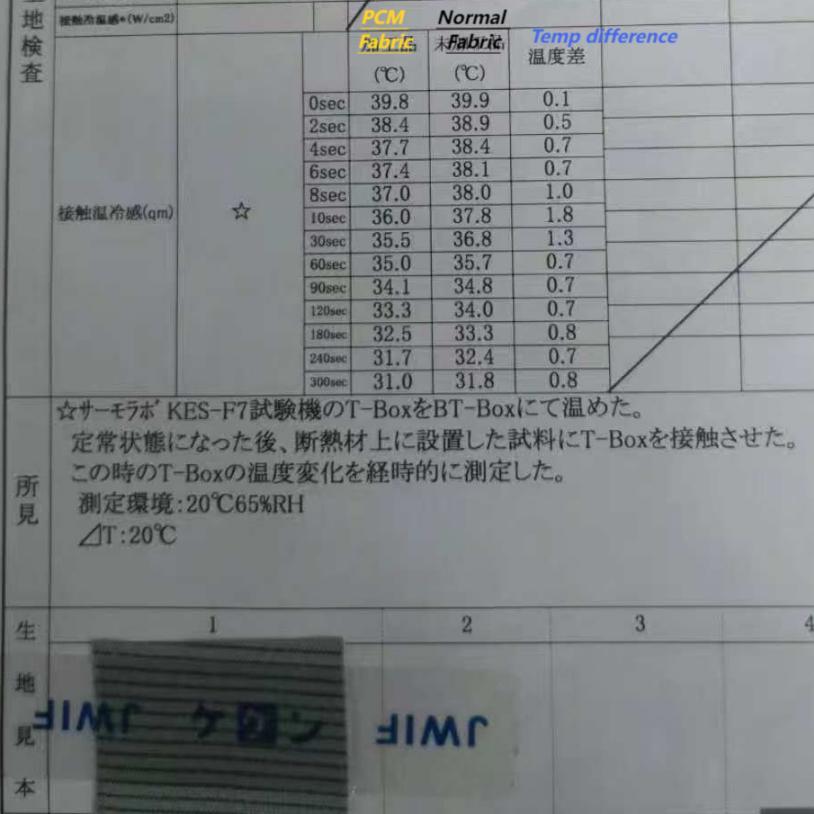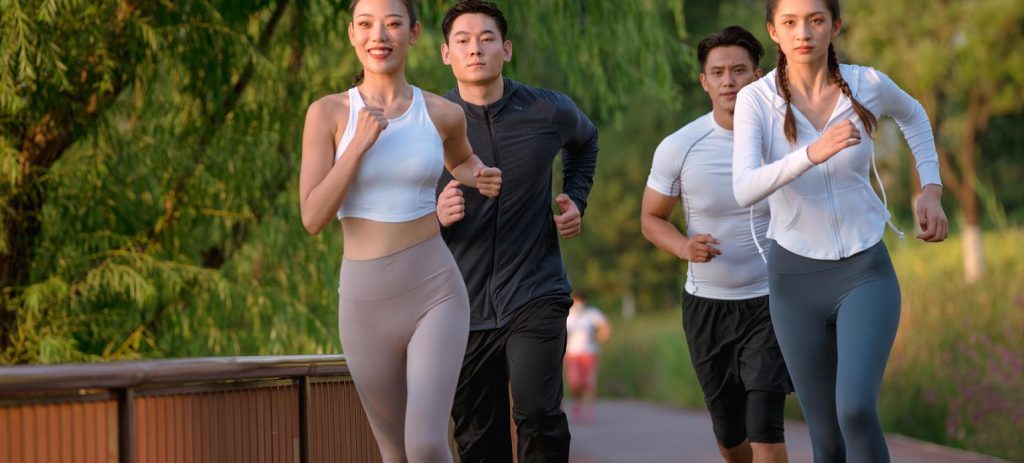
Step outside on a still July afternoon and you can almost feel your T-shirt stealing the chill from your skin. This “cool shock” is pleasant for about a minute, but the fabric soon warms up and you’re back to feeling sticky. That fleeting relief is driven by a laboratory metric called Qmax—the peak heat-flux that jumps from skin to cloth on first contact. Traditional “cool-touch” knits can post respectable Qmax scores, yet once the surface temperature matches yours, their advantage evaporates.
- What Makes PCM Fabric Different from Regular Cooling Fabrics?
- How Does PCM Technology Create Lasting Coolness?
- Why PCM Provides Superior Summer Performance: Real Test Data
- What This Means for Your Summer Comfort
- How PCM Combines with Other Performance Features
- Why Sustainability Matters in Cooling Technology
- Where you’ll feel the difference
- Embrace a Cooler, Smarter Summer
What Makes PCM Fabric Different from Regular Cooling Fabrics?
You’ve probably seen fabrics advertised with high Qmax values, promising instant cooling sensations. While these fabrics deliver that immediate cold touch when you first put them on, they’re essentially one-trick ponies. They absorb heat quickly and transfer it right back to your skin just as fast.

PCM fabric works on an entirely different principle. Instead of just conducting heat, it actively manages temperature through microencapsulated phase change materials embedded in the fibers. These tiny capsules act like thermal batteries, absorbing excess heat when you’re warm and releasing it when you cool down. Our PCM fabrics achieve Qmax values above 0.5 while providing something much more valuable—sustained thermal comfort.
In other words, Qmax tells you how brisk the first handshake is; PCM decides whether the friendship stays cool all afternoon.
How Does PCM Technology Create Lasting Coolness?
The secret lies in the phase transition process. When your body temperature rises during summer activities, the PCM microcapsules absorb that excess heat energy. As they do, they transition from solid to liquid state inside their protective shells. This phase change requires significant energy—called latent heat—which gets pulled from your body, creating a cooling effect.

Here’s where it gets interesting: unlike regular fabrics that simply pass heat through, PCM materials store this thermal energy. The temperature regulation happens at the fiber level, creating what we call an active thermal buffering system. Your body heat doesn’t just dissipate—it gets managed intelligently.
Why PCM Provides Superior Summer Performance: Real Test Data
Let me share some compelling test results that demonstrate this sustained cooling effect. In controlled testing at 20°C and 65% relative humidity, we compared PCM-treated fabric against regular fabric using thermal contact measurements.

Highlights:
- After only 10 seconds, the PCM swatch is 1.8 °C cooler.
- Even at the 5-minute mark the gap is still 0.8 °C, showing the cooling cushion doesn’t vanish.
- The temperature curve of the ordinary fabric climbs steeply, confirming that it soaks up heat and rebounds it almost immediately.
That slow, steady slope is what comfort feels like in real life.
Picture this scenario: You’ve been working outside in 35°C heat and walk into an air-conditioned office. With regular fabric, the initial temperature reading at contact was 39.9°C. After just 10 seconds, it dropped to 37.8°C—a decent 2.1°C decrease. But here’s what happened with PCM fabric: starting at 39.8°C, it cooled to 36.0°C in the same timeframe—a 3.8°C drop, nearly double the cooling effect.
The real magic shows in the sustained performance. After 3 minutes, the regular fabric stabilized at 33.3°C, while the PCM fabric maintained a cooler 32.5°C. Even after 5 minutes, the PCM fabric remained 0.8°C cooler. This might seem like a small difference, but in terms of comfort perception, it’s the difference between feeling sticky and staying fresh.
What This Means for Your Summer Comfort
These numbers translate directly to real-world comfort. When you transition from hot outdoor environments to cooler indoor spaces, PCM fabric continues working to maintain optimal skin temperature. The fabric doesn’t just react to temperature changes—it anticipates and manages them.
Our PCM fabric still posts a Qmax above 0.5 W/cm², so you get a pleasant initial chill. The key distinction is that the microcapsules extend the experience by storing latent heat—an ability Qmax alone cannot capture. Think of it as short-burst versus marathon cooling: with PCM you have both.
Think about your daily summer routine. You walk to the subway in morning heat, enter an air-conditioned train, exit to street heat again, then enter your cool office. With regular moisture-wicking fabric, you experience these temperature swings directly. PCM fabric smooths out these transitions, maintaining a more consistent microclimate against your skin. Field testers report a perceived cooling window of 20–25 minutes during moderate activity—long past the “just touched” phase.

How PCM Combines with Other Performance Features
Modern PCM fabrics don’t work in isolation. They integrate with moisture-wicking properties to create comprehensive comfort systems. As the PCM manages temperature, moisture-wicking fibers transport sweat away from your skin. This dual action prevents the clammy feeling common with traditional athletic wear.
In practical terms, this means the fabric can absorb and store significant amounts of body heat before reaching saturation. For comparison, this is like having dozens of tiny ice cubes distributed throughout your clothing, except they never melt completely—they just keep cycling between storing and releasing heat.
Why Sustainability Matters in Cooling Technology
Unlike chemical cooling treatments that wash out or electronic cooling systems that require batteries, PCM technology is inherently sustainable. The phase change materials continue functioning wash after wash, year after year. You’re not adding chemicals to wastewater or disposing of batteries—you’re wearing a passive system that works with physics rather than against it.
This durability makes PCM fabric an intelligent choice for anyone serious about both performance and environmental responsibility. Whether you’re an athlete training through summer months or someone who simply wants to stay comfortable during your commute, you’re investing in technology that lasts.
Where you’ll feel the difference
- Activewear – Running shirts, golf polos, tennis skirts. Sustained coolness postpones sweat break-through.
- Home textiles – Bedding fabrics regulate micro-climate all night, minimizing sleep interruptions.
- Uniforms & workwear – In logistics, warehousing, or hospitality, uniforms with PCM reduce heat fatigue over long shifts.

Embrace a Cooler, Smarter Summer
True summer comfort isn’t just about momentary cool sensations. It’s about sustained, intelligent temperature regulation that actively adapts to your body and environment.
Our PCM fabric, delivers lasting comfort backed by smart science and real performance data. Experience fabric that actively works with your body, keeping you comfortable while reducing energy consumption and contributing to a more sustainable future.
Choose PCM fabric and embrace a genuinely cooler, smarter summer.




